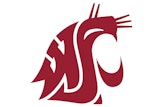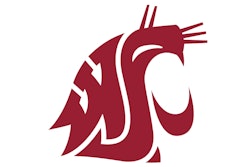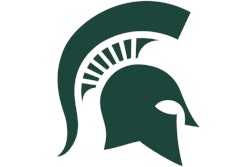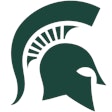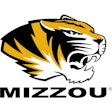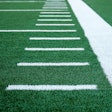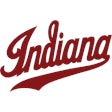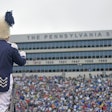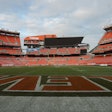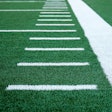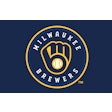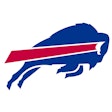![[Photo courtesy of InCord]](https://img.athleticbusiness.com/files/base/abmedia/all/image/2018/01/ab.startinglines118_feat.png?auto=format%2Ccompress&q=70&w=400)
On Sept. 20, the New York Yankees played host to the Minnesota Twins at Yankee Stadium. Despite a Yankees' victory improving the team's playoff prospects, the game was dramatic for an entirely different reason.
During the fifth inning, a young girl sitting behind the third base dugout was struck in the face by a line drive foul ball off the bat of Todd Frazier.
Frazier's reaction to the incident was immediate. Other players on the field and in the dugouts were also quick to react. As fans began to grasp what had happened, the stadium grew silent.
It wasn't pretty. The girl's multiple facial fractures and bleeding on the brain were among the most serious in a series of foul ball injuries sustained by fans at ballparks in recent years, and fans and teams alike are more aware of foul ball injuries than ever.
"Because of the frequency of the injuries, there is more of an awareness and more of a need for netting in certain areas," says Charles Crawford, a sales manager with sports netting manufacturer InCord.
According to Forbes, by the time of the incident at Yankee Stadium, 10 MLB teams had already installed extended safety netting in their ballparks, but no league-wide standard had been adopted.
In general, courts have held that baseball teams have a "limited duty" to protect fans from foul ball injuries (see page 20). Generally speaking, fans in particularly dangerous seats — like those in the area behind home plate — can assume to be protected by some form of screen. Teams have long had netting to protect fans seated in these areas.
It seems obvious, given that foul balls can travel at speeds of more than 100 miles per hour, that fans seated behind home plate wouldn't have near enough time to react and get out of the way of an incoming projectile. But what about fans seated outside the so-called danger zone?
RELATED: Rethinking the Rink
"The players are hitting harder, hitting faster, and it's going out into those areas a lot faster than it used to," says Crawford. "We've learned how to create better bats and better equipment, so that does help. And hurt."
Prior to the 2016 MLB season, the league issued new recommendations calling for extended protective netting from behind home plate to the dugouts, with the idea that seats within 70 feet of home plate be protected. Many teams — and fans — responded positively to the league's willingness to adapt.
"Look at how we travel today in airports compared to pre-9/11," Crawford notes. "It was an adjustment, and some people thought, 'Oh no, there's no way we can travel like this.' And it's common now. You have to adapt to be safe."
"And this isn't a big leap," adds Russ Nieman, InCord's senior marketing strategist. "It's probably the minimal change that one can expect to see happen. It's a simple yet effective safety measure."
Still, not everyone has greeted extended netting with enthusiasm.
"People have used the term 'ruined.' The game is ruined because in my dugout seats, I now have a net in front of me," says Nieman. "But is that really the case? Is the game actually affected?"
Ensuring both fan safety and fan experience becomes a balancing act.
"In any organization, on virtually any level, there are always going to be multiple entities involved," Nieman says. "The board of advisers, the fans themselves, the team, the team management. The facility director or whoever is going to make that final decision has to weigh all the different options."
Previously, courts have held that fans attending baseball games assume a certain amount of risk. MLB tickets state that fans relinquish the right to sue for injuries sustained by foul balls as a condition of entering the ballpark. However, calls for extended netting have trickled down to lower levels, as well.
Of particular concern are municipal park systems where multiple ballfields are located, often backing up to one another.
"Then you have not only the issue of line drive foul balls for the spectators watching the game that they're facing, but also pop flies from fields behind you or beside you," says Crawford. In those cases, "they'll extend netting and put netting overhead, as well, because a lot of these parks will have concessions stands in the middle."
Additionally, many indoor facilities that host indoor lacrosse, soccer or hockey have expanded safety netting. The NHL reexamined its netting guidelines after an errant puck fatally struck a girl during a Columbus Blue Jackets game in 2001.
"It's time for everybody to reevaluate and look at what they're doing with netting," says Nieman. "It's not just professional teams, it's all the way down to the college and high school levels."
In the wake of the injury to the girl at Yankee Stadium, the team announced that it would extend protective netting ahead of the 2018 season. And the Yankees are not alone. At least five additional teams — the Brewers, Padres, Mariners, Reds and Rockies — will do likewise.
This article originally appeared in the January|February 2018 issue of Athletic Business with the title "Foul ball injury prompts stadium operators to reconsider netting." Athletic Business is a free magazine for professionals in the athletic, fitness and recreation industry. Click here to subscribe.














